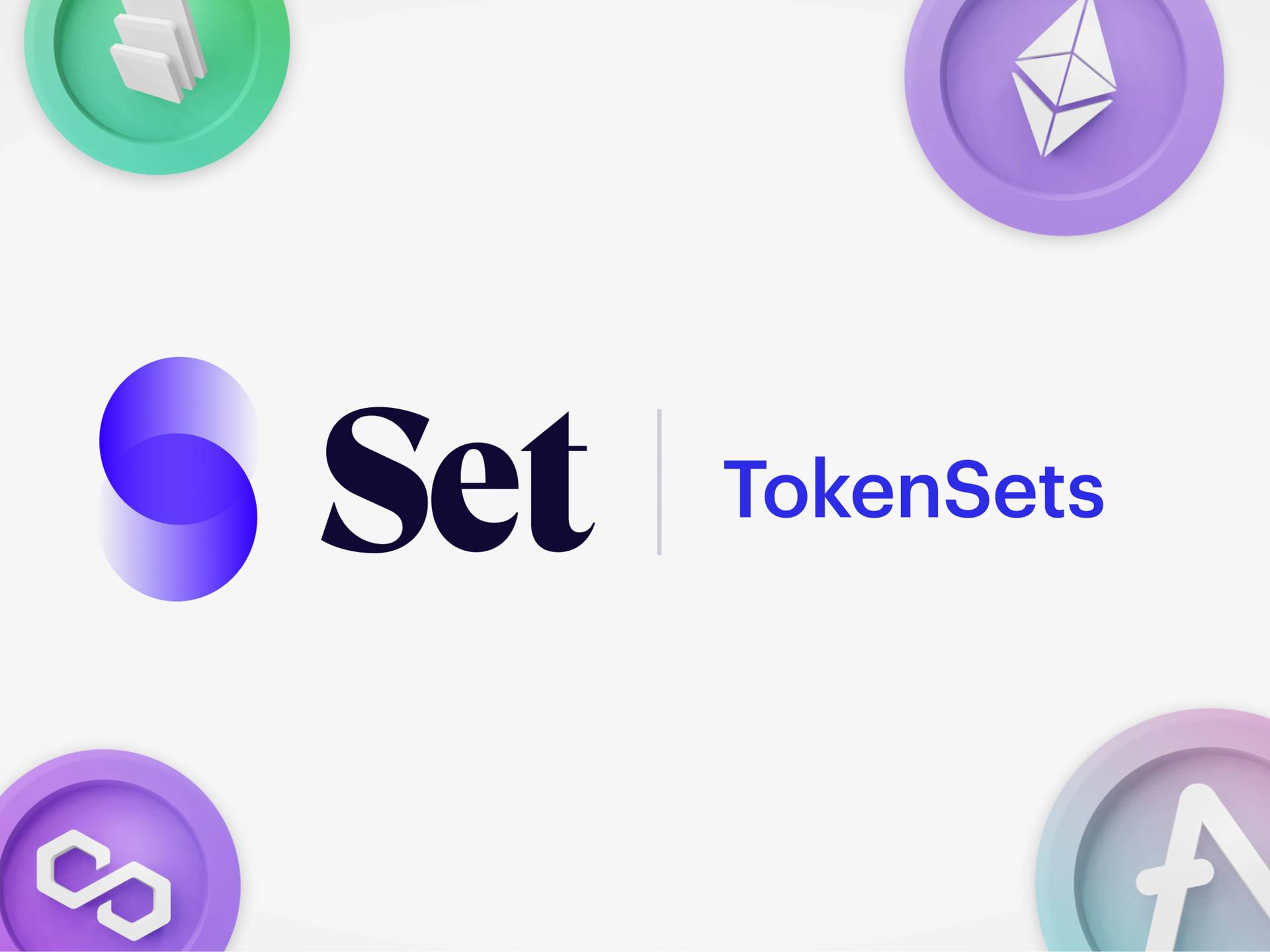订阅 wiki
Share wiki
Bookmark
TokenSets
TokenSets
TokenSets(成立于 2017 年)是一种协议,它将加密资产捆绑到代币化的篮子中,这些篮子被编程为根据任何管理或交易逻辑自动重组。[8]
概述
TokenSets 提供加密货币篮子和投资组合管理服务。它提供各种自动化资产管理策略。它为投资提供 ERC20 标准的加密代币篮子。[6]
Set Protocols 是一个建立在以太坊上的非托管协议,允许创建、管理和交易 Sets,即代表底层资产投资组合或篮子的 ERC-20 代币。 每个 Set 根据编码到其智能合约中的策略运行并定期重新平衡其投资组合。
Set Protocol 于 2017 年 11 月宣布,其第一个面向用户的应用程序 TokenSets 于 2019 年 4 月推出。
用户可以使用专业的资产管理工具,这些工具可以帮助您创建、管理和发展您的 Set。
开发者
用户可以使用开发者文档和 SDK 直接创建自己的 set。使用任何 ERC20 资产和策略对其进行自定义。
资产管理者
用户可以使用 Set 的投资组合管理工具来重新平衡并利用产生收益的机会。
方法学家
用户可以通过 Index Coop 的社区和流动性激励来增加他们管理的资产。
TokenSets 的背景故事
TokenSets 的诞生源于加密货币中的结构性产品将变得巨大的想法。
在金融领域,十年前的 ETF 投资了 7000 亿美元的现金。今天,这个数字是 5.1 万亿美元,增长了 7 倍以上。将其与世界上任何有互联网连接的人都可以参与全球金融体系的加密货币相结合,它可以成为创造财富的强大工具。
有了这个愿景,该团队从 Craft Ventures、Vy Capital、DFJ、Social Capital、Kindred Ventures、Haystack Ventures 筹集了资金,并在为加密货币市场构建智能金融产品方面取得了进展。
归根结底,我们想创造一种能够解决我们自身问题的产品。我们想要创造一种足够智能的产品,可以根据市场情况在正确的时间进入和退出头寸,并且无需情绪风险或花费数小时盯着图表寻找买卖信号。显然,我们并不是唯一面临这个问题的人,当我们询问我们的加密货币朋友时,他们绝大多数都同意他们感受到了这些痛苦
TokenSets 的构建旨在帮助人们轻松购买一种资产,该资产可以为持有 Set 的用户进行所有智能管理。您购买的每个 Set 的魔力都发生在 Set Protocol 层。该协议会监控加密货币市场状况,并根据所选策略,根据是否存在买入或卖出信号来管理资产。它可以帮助消除价格过低时恐慌性抛售或价格过高时 fomo 买入的情绪风险。
TokenSets 的作用
TokenSets 将自动化资产管理引入加密货币。它提供两种类型的 set:社交交易 set 和 robo set。每个 Set 都有自己的标准,用于何时重新平衡其资产投资组合的权重。当满足 Set 的重新平衡标准时,会启动一个宽限期,让持有者可以在重新平衡之前选择退出。在宽限期之后,TokenSets 的转移将暂停,直到通过修改后的荷兰式拍卖过程完成重新平衡。[7]
Robo Sets
Robo Sets 选项是一系列预定义的 Sets,供交易者使用,以适应他们想要的内置于 set 中的交易策略。它们是硬编码的策略,包括趋势交易、区间震荡以及买入并持有 sets。
社交交易 Sets
社交交易 Sets 是由人类交易者执行的策略,它们的工作方式与 Robo 交易 Sets 相同,不同之处在于它们是由人执行的。这种类型的 set 可以控制选择表现最佳的交易者来信任。随着更多代币添加到 TokenSets 中,此选项将变得越来越受欢迎。添加更多代币将为交易者提供更多种类,并将社交 Sets 与 Robo Sets 区分开来。
Sets 重新平衡
重新平衡是重新调整资产投资组合权重的过程。当组件代币价格变化足够大,并且通过链上重新平衡机制经过足够的时间时,Sets 会定期调整其分配。Set 重新平衡不使用 Kyber 作为流动性来源,而是使用公开市场参与者来提供流动性。这是为了确保用户不会产生不必要且不可预测的滑点。
- Index Coop
这是一个专注于构建最伟大的产品和金融构建块的合作社。它最广为人知的是创建、维护和发展由 Set Protocol 提供支持的 (DPI)。
- TokenSets UI
是一个开源 UI,可以通过 Web3 实现与 Set Protocol 系统的交互。有了它,任何人都可以开始创建 Set 策略并与他们的 Sets 进行交互。还有针对您的策略客户发布您的策略的消费者流程。
Set Protocol V2
Set Protocol V2(“Set V2”)是一个基于以太坊的协议,它支持以下功能:
- 多资产:Set V2 支持创建和实施采用单资产、货币对和 3 种以上资产的策略
- 保证金交易:Set V2 允许交易者通过 Set 的原生借贷池安全地实施保证金交易。这使交易者可以采取杠杆多头和空头头寸,并使 Set 所有者可以铸造/赎回头寸。
- 对代币化头寸的第三方协议支持:Set V2 使 Set 交易者可以利用来自第三方借贷协议(例如 Compound、Aave)和自动化做市商(例如 Balancer、Uniswap、Curve)的收益机会。此外,如果策略采用收益耕作,Set V2 允许检索空投代币
- 交易者订阅和绩效费用:交易者可以实施基于时间的(订阅)和基于绩效的(利润)费用
- SetToken 兼容性:Set V2 的 SetToken 使用 ERC20 标准实施,由底层资产完全抵押,可以像 ETF 一样发行/赎回,是无需信任的,具有指定的组件、单位/自然单位,并且是无需信任的,如 Set Protocol 白皮书中所述。
- 协议费用:为了实现协议的可持续性,协议将对协议原生交易收取费用,例如通过荷兰式拍卖进行交易、使用协议的借贷池进行借款以及订阅/利润分成。
- 协议代币分配支持:为了预测需要链上分配机制的协议代币,协议设计将预测代币分配逻辑的需求。
- 管理员管理:Set V2 使管理员可以更好地控制如何以及何时可以铸造 Sets 以及由谁铸造。
架构
Set V2 采用模块化架构,该架构由模块化智能合约的集合组成,可以在其中无缝集成或删除其他组件(例如模块、工厂)。这种架构是可扩展的,允许轻松添加新功能和集成。[2] Set 的系统包括:
- SetToken 工厂:SetToken 工厂是包含创建 SetToken 模板的智能合约。可能有很多工厂,但鉴于 SetToken 的可扩展性,我们预计不会有很多工厂。[1]
- SetToken:SetToken 是实现 ERC20 标准的智能合约,并存储组件组成、用户余额、管理器和已启用模块的状态。SetToken 存储仅其已启用模块可用的特权功能,例如铸造、销毁、调用和重新配置
- 模块:模块是可以附加到 SetToken 的智能合约,可以启用交易、保证金和发行功能等功能。模块充当与模块相关交互的入口点,并且可以在 SetToken 之间保持通用状态。一些模块包括 BasicIssuanceModule(允许使用默认头寸铸造/赎回 Sets)、TradeModule(允许 DEX 交易)、WrapModule(允许在外部协议(例如 Compound 和 AAVE)上包装组件)和 StreamingFeeModule(允许管理员收取订阅费)。[3]
- 资源:资源是提供可以从模块、SetToken 或 SetTokenCreator 合约中提取的数据、功能或权限的合约。一些资源包括 MasterPriceOracle(用于检索代币价格信息的单个合约)和 IntegrationRegistry(用于存储外部协议集成的所有适配器合约的单个合约。例如 Kyber、1Inch、AAVE、Compound 等)。
- 控制器:存储有效的 SetToken、模块、工厂、资源、用户批准、协议费用设置和治理功能。[4]
TokenSets 平台具有非常有价值的用例,因为它以资产支持的篮子的形式在现实金融中可见,并且该平台为交易者提供的控制量使其成为添加到 DeFi 工具包中的一个不错的工具。TokenSets 团队已经采用了该用例,并成功地将其带到了区块链。[5]
发现错误了吗?
